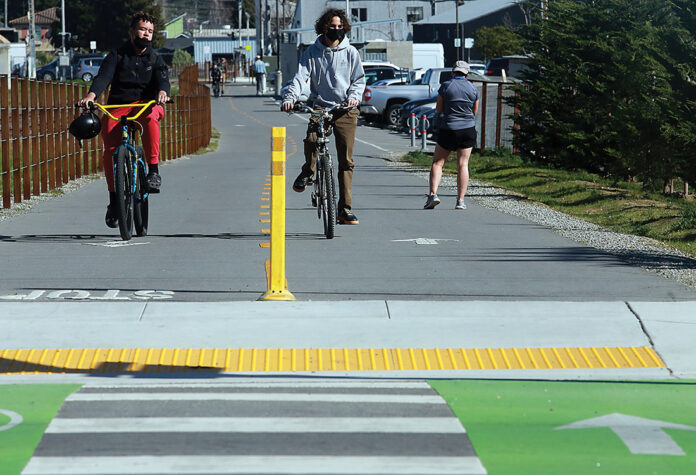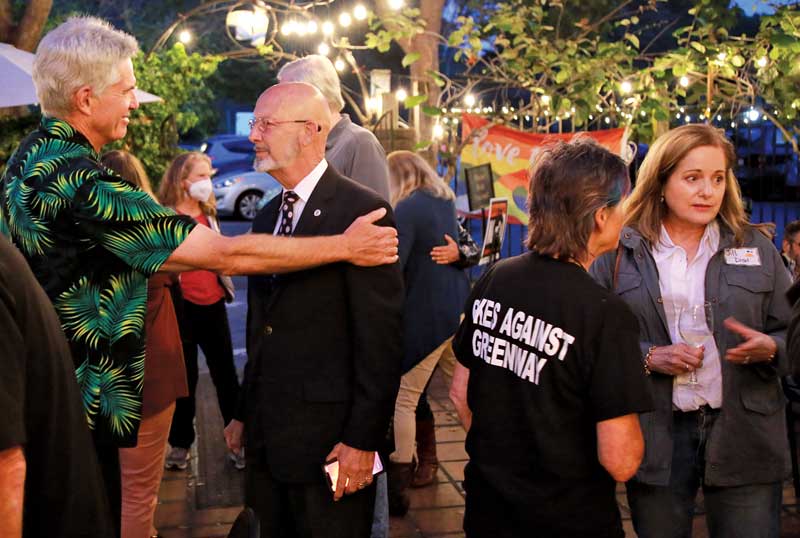
SANTA CRUZ COUNTY—Measure D–which was hailed by many as a way to get Santa Cruz County residents out of their vehicles, off the roads and onto a bike-pedestrian path that replaced the rail line–was dealt a crushing blow Tuesday when it went down in a landslide.
As of Wednesday afternoon, Santa Cruz County election results show 21,021 people had voted against it, while 8,580 voted yes.
The measure would have rewritten the county’s general plan with language of developing a trail-only model along the county’s existing rail corridor, a plan that could have included removing the tracks in a process called “railbanking.”
But opponents–many of whom hope in the future to see passenger rail spanning the length of the county, with a trail alongside it–said the measure would have forever removed the rail option.
“It is clear that that is what the people want,” said Mark Mesiti-Miller, Vice Chair of the Friends of the Rail & Trail. “There is no question anymore. The people want a greener, more sustainable, more equitable transportation network service to serve the entire community.”
In a prepared statement, Santa Cruz County Regional Transportation Commission spokeswoman Shannon Munz said that rail funding has not changed as a result of the vote, but that staff will continue to look for future passenger rail funding opportunities.
“The RTC will be looking to our commissioners and policy makers for their priorities and how they want to proceed from here,” Munz said.
The commission is also working on environmental impact reports for rail trail segments 8-12, she said.

Brian Peoples, executive director of Trail Now—which was at the forefront of support for the measure—says that the RTC will soon consider the future of work along the rail corridor, with options that could include an interim trail or work on the more expensive rail-trail.
But it is unclear when such a discussion will occur. Munz says it is not slated for the June 16 meeting, and the RTC will not meet in July.
But the discussion has trail-only advocates concerned. Peoples says that the more costly option of working on both the rail and trail—the RTC estimates that option could cost as much as $250 million—could delay a trail for years.
“I hope we don’t wait another decade to open the Santa Cruz Coastal Trail,” he says. “There are three main transportation corridors: Highway 1, Soquel and the Coastal Corridor. All three need to be open for our community to be mobile, and I hope the vote does not prevent us from opening the coastal trail in a timely and cost-effective manner.”
County Clerk Tricia Webber says that just 30,340 ballots have been recorded so far, representing just 18.1% of registered voters. That number could soon change, however. The office received 35,000 vote-by-mail ballots Tuesday, which could more than double that number.
If that happens, it would make the number average for a primary year, Webber said.
Mesiti-Miller said the wide margin of the victory also came as an unexpected shock because of the support the measure apparently had—Yes Greenway reported nearly $500,000 in campaign financing, while No Way Greenway raised around $290,000.
“That we prevailed by such a large margin when we were outgunned is pretty significant,” Mesiti-Miller said.
He attributed the success in part to the breadth of people and organizations that opposed the measure. This included businesses, schoolteachers, to labor unions, environmentalists and democratic clubs, he said.
“Everybody stood together,” he said. “It was pretty surprising.”
Mesiti-Miller also says the measure’s defeat is a win for South County, which did not stand to benefit from a trail-only model.
“We’re not going to favor one part of the county over another,” he said. “Everybody needs to benefit. The idea of a trail only between Santa Cruz and Watsonville was just unacceptable. Despite the many claims, there is no way you can claim that is an equitable use of the rail corridor.”












